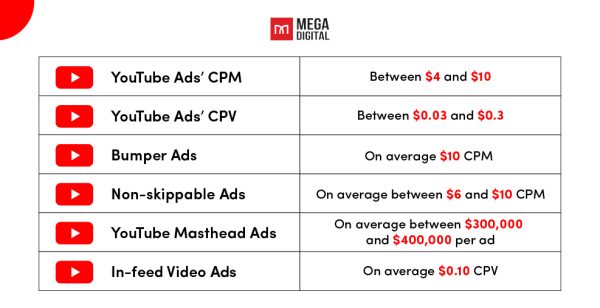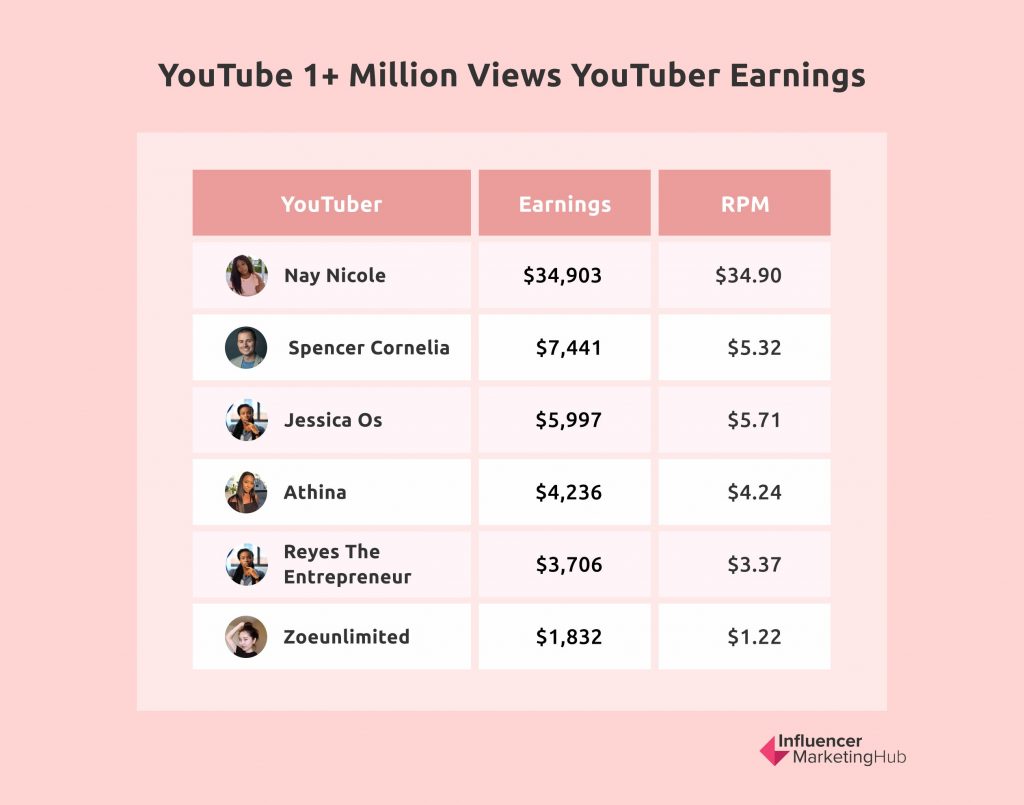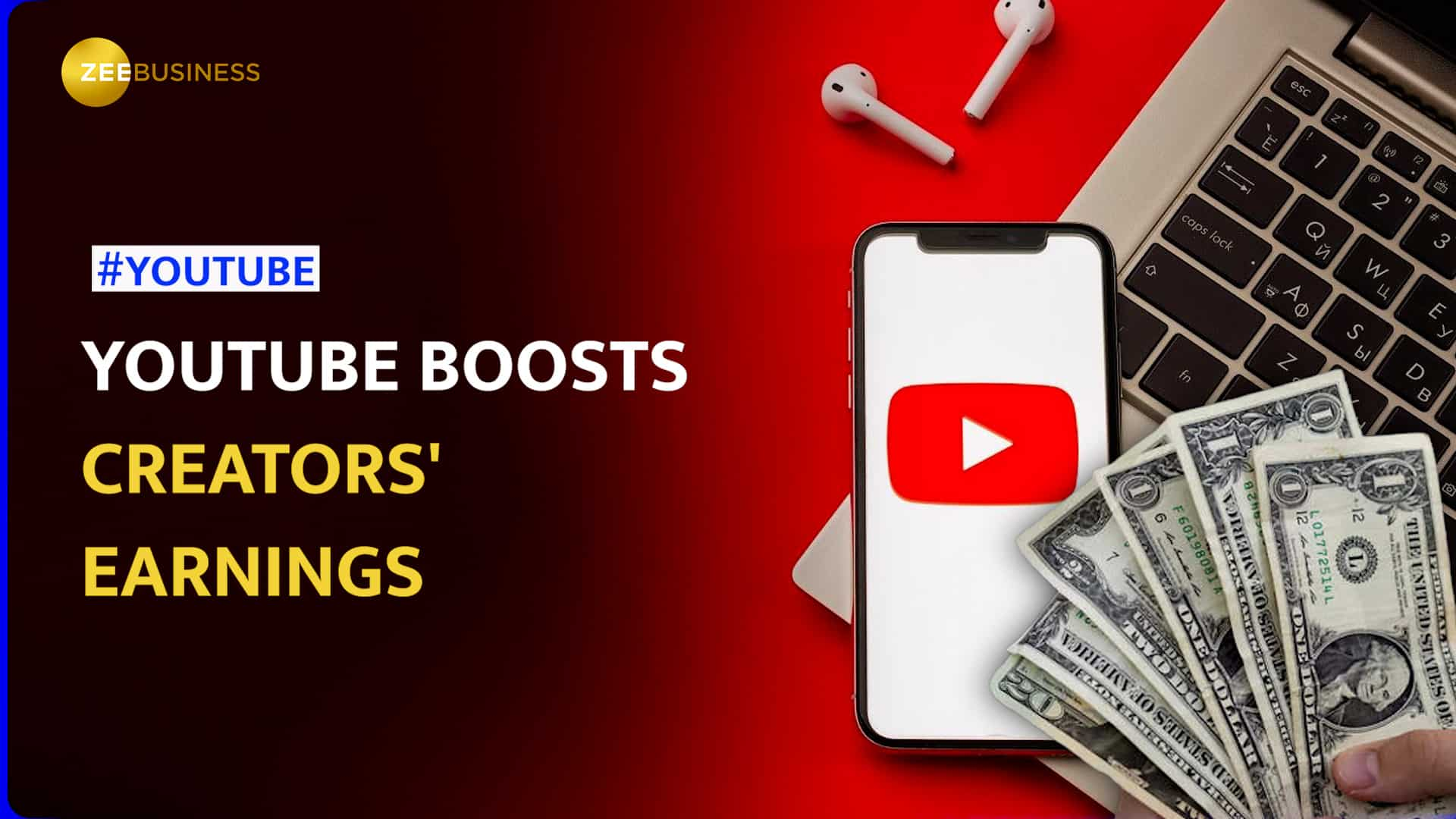Cracking the Code: Understanding YouTube’s Monetization Formula
YouTube’s Partner Program (YPP) is the key to unlocking the secrets of YouTube video earnings. To monetize their videos, creators must meet YouTube’s monetization requirements, which include having at least 1,000 subscribers and 4,000 watch hours in the past 12 months. Once these requirements are met, creators can apply for the YPP and start earning money from their videos.
The YPP enables creators to monetize their videos through ads, sponsorships, and merchandise sales. Advertisers pay YouTube to display ads on videos, and creators earn a portion of the ad revenue based on the number of views and clicks on their videos. Sponsorships and merchandise sales provide additional revenue streams for creators.
Understanding YouTube’s monetization formula is crucial to maximizing earnings. The formula takes into account factors such as video views, engagement, niche or topic, audience demographics, and advertiser demand. Creators who produce high-quality, engaging content that resonates with their audience and meets the needs of advertisers can increase their earnings.
For example, a creator who produces videos on a popular niche like gaming or beauty may earn more than a creator who produces videos on a less popular niche. Similarly, a creator who has a highly engaged audience may earn more than a creator who has a less engaged audience.
While it’s difficult to estimate exactly how much YouTube videos make, creators can use tools like YouTube Analytics to track their earnings and understand what works and what doesn’t. By analyzing their earnings data, creators can adjust their strategy to maximize their earnings and achieve their goals.
In the next section, we’ll explore the key factors that influence YouTube video earnings and provide tips and strategies for increasing earnings.
Factors Affecting YouTube Video Earnings: What You Need to Know
When it comes to determining how much YouTube videos make, several factors come into play. Understanding these factors is crucial for creators who want to maximize their earnings on the platform. In this section, we’ll explore the key factors that influence YouTube video earnings.
One of the most significant factors affecting YouTube video earnings is video views. The more views a video gets, the more money it can earn from ads. However, views alone are not enough to guarantee high earnings. Engagement, such as likes, comments, and shares, also plays a critical role in determining earnings.
The niche or topic of a video is another important factor. Certain niches, such as gaming, beauty, and finance, tend to be more profitable than others. This is because these niches have a large audience and are often in high demand by advertisers. For example, a gaming video with millions of views can earn significantly more than a video on a less popular topic.
Audience demographics also play a role in determining earnings. Videos that appeal to a younger audience, such as teenagers and young adults, tend to earn more than videos that appeal to an older audience. This is because younger audiences are more likely to engage with ads and make purchases.
Advertiser demand is another critical factor. Advertisers are willing to pay more to reach certain audiences, such as those interested in finance or technology. Videos that cater to these audiences can earn more than videos that cater to less in-demand audiences.
For example, a video on personal finance may earn more than a video on a less popular topic, such as gardening. This is because personal finance is a high-demand niche with many advertisers willing to pay to reach that audience.
By understanding these factors, creators can optimize their content to maximize their earnings on YouTube. In the next section, we’ll explore the role of AdSense in YouTube video earnings and how it works.
The Role of AdSense in YouTube Video Earnings
AdSense is a crucial component of YouTube’s monetization formula, enabling creators to earn money from their videos through ads. But how does AdSense work, and what role does it play in determining how much YouTube videos make?
AdSense is a program that allows website publishers and YouTube creators to monetize their content with ads. When a creator joins the YouTube Partner Program (YPP), they can enable AdSense on their videos, allowing ads to be displayed before, during, and after their content.
There are several types of ads that can be displayed on YouTube videos, including display ads, overlay ads, and video ads. Display ads are the most common type of ad and are displayed as banners or rectangles on the video player. Overlay ads are semi-transparent ads that are displayed on top of the video content, while video ads are full-screen ads that play before, during, or after the video.
The type and frequency of ads displayed on a video can significantly impact earnings. For example, videos with high engagement and views may be more likely to display video ads, which can earn more than display ads. Additionally, creators can earn more from ads that are clicked or viewed, rather than just displayed.
AdSense also takes into account the niche or topic of the video, as well as the audience demographics. For example, videos on finance or technology may earn more from ads than videos on entertainment or lifestyle. This is because advertisers are willing to pay more to reach audiences interested in these topics.
By understanding how AdSense works and the role it plays in YouTube video earnings, creators can optimize their content to maximize their earnings. In the next section, we’ll explore actionable tips and strategies for increasing YouTube video earnings.
How to Increase YouTube Video Earnings: Tips and Strategies
Now that we’ve explored the factors that influence YouTube video earnings and the role of AdSense, let’s dive into actionable tips and strategies for increasing earnings. By implementing these strategies, creators can maximize their YouTube video earnings and achieve their financial goals.
Optimizing video titles and tags is a crucial step in increasing YouTube video earnings. By using relevant and high-traffic keywords, creators can improve their video’s visibility and attract more views. Additionally, using eye-catching thumbnails can help grab viewers’ attention and increase click-through rates.
Leveraging social media to promote videos is another effective strategy for increasing earnings. By sharing videos on platforms like Facebook, Twitter, and Instagram, creators can reach a wider audience and drive more traffic to their YouTube channel. Collaborating with other creators or influencers can also help expand a channel’s reach and increase earnings.
Engaging with the audience is also essential for increasing earnings. By responding to comments, creating a community around the channel, and offering exclusive content, creators can build a loyal following and increase viewer retention. This, in turn, can lead to more views, engagement, and ultimately, higher earnings.
Utilizing YouTube’s features, such as cards, end screens, and annotations, can also help increase earnings. These features allow creators to add interactive elements to their videos, promote their channel, and drive traffic to their website or other social media platforms.
Finally, creators can increase their earnings by offering exclusive content, such as premium videos or exclusive access to their channel. This can be done through YouTube’s membership feature or by offering exclusive content on other platforms.
By implementing these strategies, creators can increase their YouTube video earnings and achieve their financial goals. In the next section, we’ll explore YouTube video earnings estimates and what creators can expect to earn based on their views, engagement, and niche.
YouTube Video Earnings Estimates: What to Expect
Estimating YouTube video earnings can be a complex task, as it depends on various factors such as views, engagement, niche, and advertiser demand. However, by understanding these factors and setting realistic expectations, creators can better navigate the world of YouTube monetization.
On average, a YouTube video with 1,000 to 10,000 views can earn between $1 to $100 per month, depending on the niche and engagement. However, videos with higher views and engagement can earn significantly more. For example, a video with 100,000 views and high engagement can earn up to $1,000 per month.
It’s also important to note that YouTube takes a 45% cut of ad revenue, and creators also have to pay taxes on their earnings. Therefore, the actual take-home pay for creators may be lower than the estimated earnings.
Setting realistic expectations is crucial for creators who want to monetize their YouTube videos. By understanding the factors that influence earnings and tracking their progress over time, creators can adjust their strategy to maximize their earnings.
For example, a creator who produces videos on a niche topic with low advertiser demand may not earn as much as a creator who produces videos on a popular topic with high advertiser demand. However, by optimizing their video titles, tags, and thumbnails, and engaging with their audience, the creator can still increase their earnings.
Tracking earnings over time is also essential for creators who want to maximize their YouTube video earnings. By using YouTube Analytics, creators can monitor their earnings, views, and engagement, and adjust their strategy accordingly.
In the next section, we’ll explore real-life examples of high-earning YouTube videos and analyze the factors that contributed to their success.
Success Stories: Real-Life Examples of High-Earning YouTube Videos
While it’s difficult to estimate exactly how much YouTube videos make, there are many success stories of high-earning YouTube videos that can provide valuable insights. In this section, we’ll explore some real-life examples of high-earning YouTube videos and analyze the factors that contributed to their success.
One example is the YouTube channel “PewDiePie,” which has over 100 million subscribers and has earned an estimated $50 million in ad revenue alone. The channel’s success can be attributed to its engaging content, consistent uploads, and strong audience engagement.
Another example is the YouTube channel “Markiplier,” which has over 20 million subscribers and has earned an estimated $10 million in ad revenue. The channel’s success can be attributed to its unique blend of gaming content and charity work, as well as its strong engagement with its audience.
These success stories demonstrate that high-earning YouTube videos often have a combination of factors that contribute to their success, including engaging content, consistent uploads, strong audience engagement, and a well-executed monetization strategy.
By analyzing these success stories, creators can gain valuable insights into what works and what doesn’t when it comes to earning money on YouTube. By incorporating these strategies into their own content and monetization plans, creators can increase their chances of success and maximize their YouTube video earnings.
In the next section, we’ll discuss common mistakes that can hurt YouTube video earnings and provide tips on how to avoid them.
Common Mistakes to Avoid When Trying to Earn Money on YouTube
While many creators have found success on YouTube, others have struggled to earn money due to common mistakes that can hurt their video earnings. In this section, we’ll discuss some of the most common mistakes to avoid when trying to earn money on YouTube.
One of the most common mistakes is violating YouTube’s community guidelines. This can result in a video being removed or a channel being suspended, which can significantly impact earnings. Creators should always ensure that their content complies with YouTube’s guidelines and terms of service.
Another mistake is using clickbait titles or thumbnails. While these tactics may attract more views, they can also lead to a high bounce rate and low engagement, which can negatively impact earnings. Creators should focus on creating high-quality, engaging content that resonates with their audience.
Neglecting audience engagement is also a common mistake. Creators who don’t respond to comments or engage with their audience may see a decline in views and earnings over time. Building a loyal community is essential for long-term success on YouTube.
Not optimizing videos for monetization is another mistake. Creators should ensure that their videos are optimized for ads, sponsorships, and merchandise sales by using relevant keywords, tags, and descriptions.
Finally, not tracking earnings and analytics is a mistake that can hurt YouTube video earnings. Creators should use YouTube Analytics to track their earnings, views, and engagement, and adjust their strategy accordingly.
By avoiding these common mistakes, creators can increase their chances of success and maximize their YouTube video earnings. In the next section, we’ll discuss advanced strategies for maximizing YouTube video earnings.
Maximizing YouTube Video Earnings: Advanced Strategies for Creators
For creators who want to maximize their YouTube video earnings, there are several advanced strategies that can be employed. In this section, we’ll discuss some of these strategies and how they can help increase earnings.
One advanced strategy is using YouTube Analytics to track earnings. By monitoring earnings, views, and engagement, creators can identify areas for improvement and adjust their strategy accordingly. This can help increase earnings and optimize video performance.
Leveraging YouTube Premium revenue is another advanced strategy. YouTube Premium is a paid subscription service that offers ad-free videos, exclusive content, and offline playback. Creators can earn a share of the revenue generated by YouTube Premium, which can be a significant source of income.
Exploring alternative monetization options is also an advanced strategy. In addition to AdSense, creators can earn money through sponsorships, merchandise sales, and affiliate marketing. By diversifying their income streams, creators can reduce their reliance on AdSense and increase their overall earnings.
Using YouTube’s Super Chat and Memberships features is another advanced strategy. Super Chat allows viewers to pay for their messages to be highlighted in live chat, while Memberships allows creators to offer exclusive content and perks to their loyal viewers. Both features can provide a significant source of income for creators.
Finally, creators can maximize their YouTube video earnings by optimizing their videos for YouTube’s algorithm. By using keywords, tags, and descriptions that are relevant to their content, creators can increase their video’s visibility and attract more views.
By employing these advanced strategies, creators can maximize their YouTube video earnings and achieve their financial goals. Remember, success on YouTube requires ongoing effort and optimization, but with the right strategies, creators can unlock their full earning potential.






